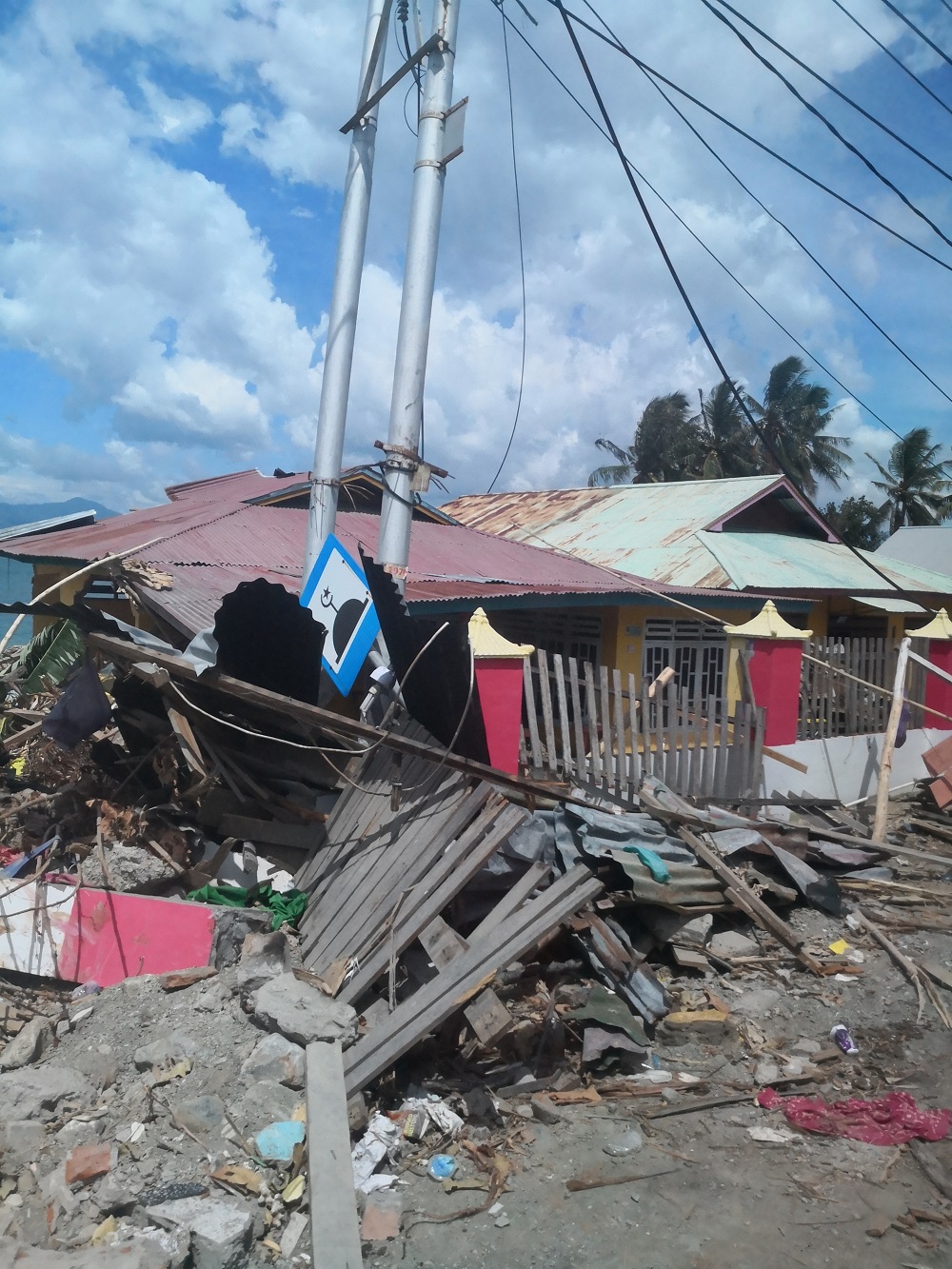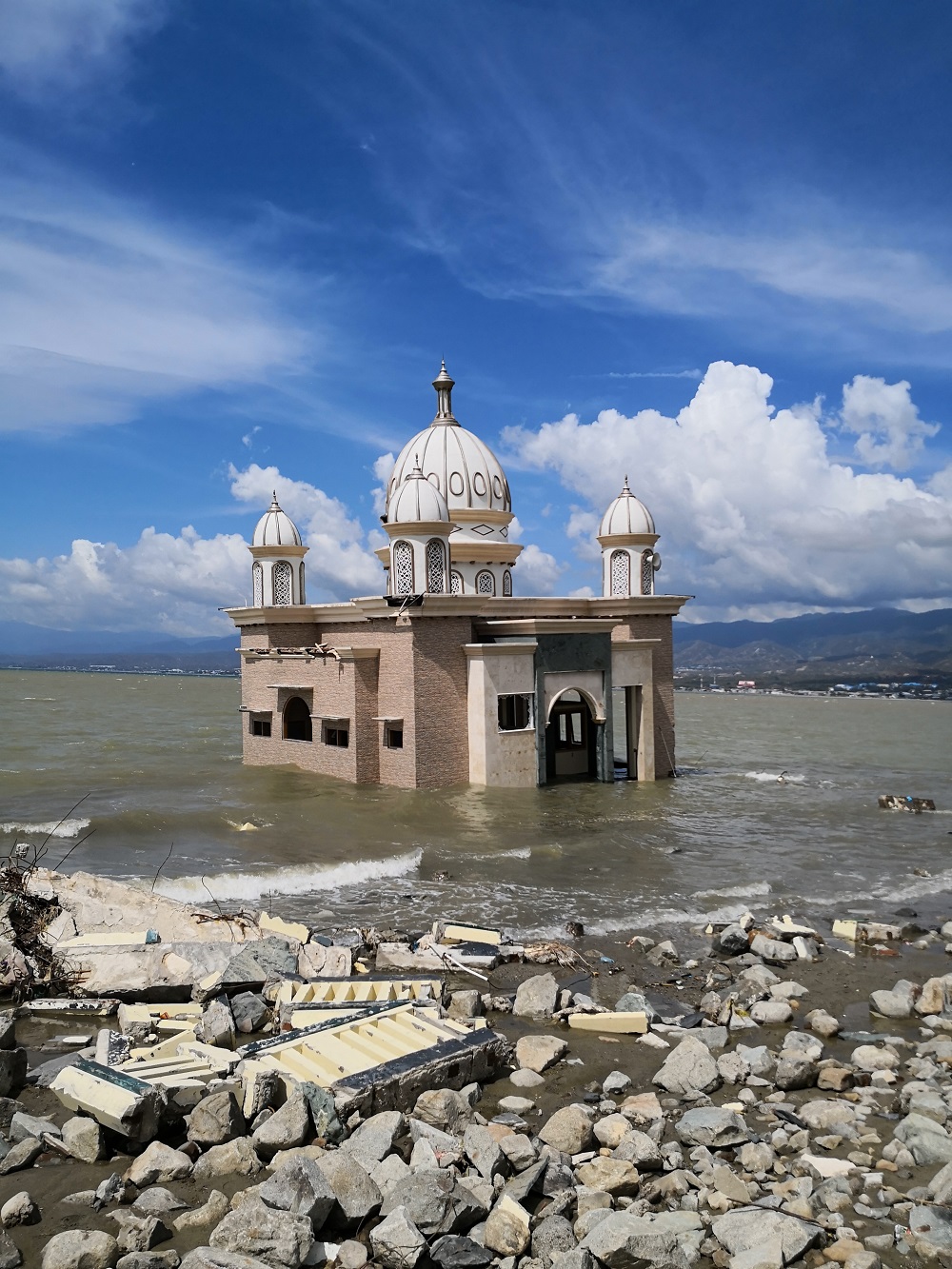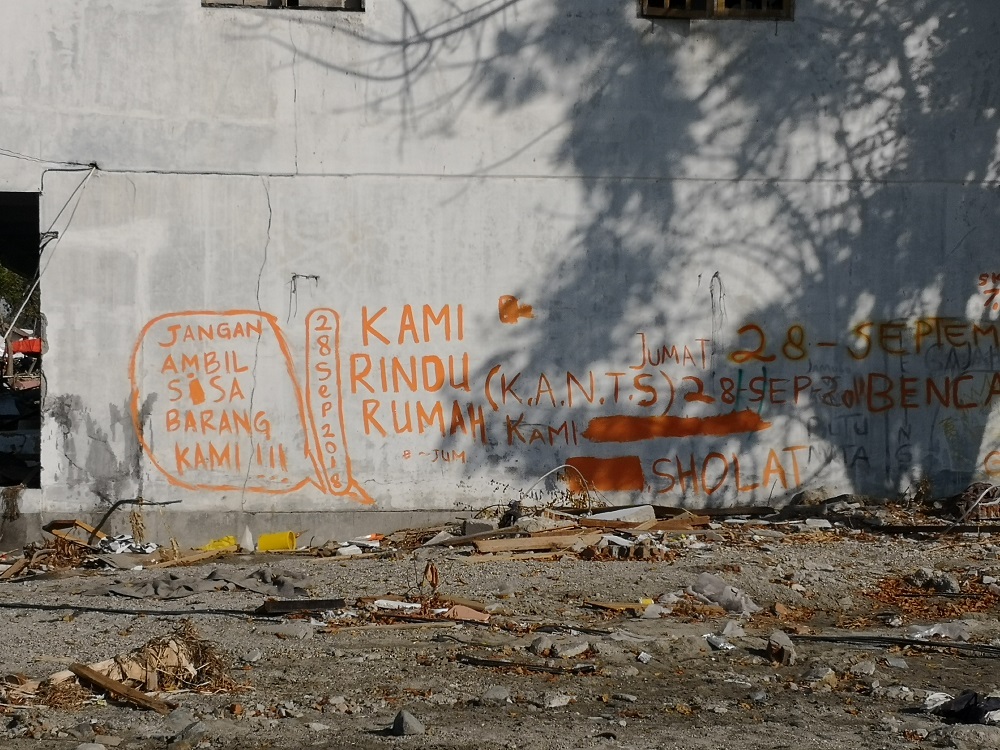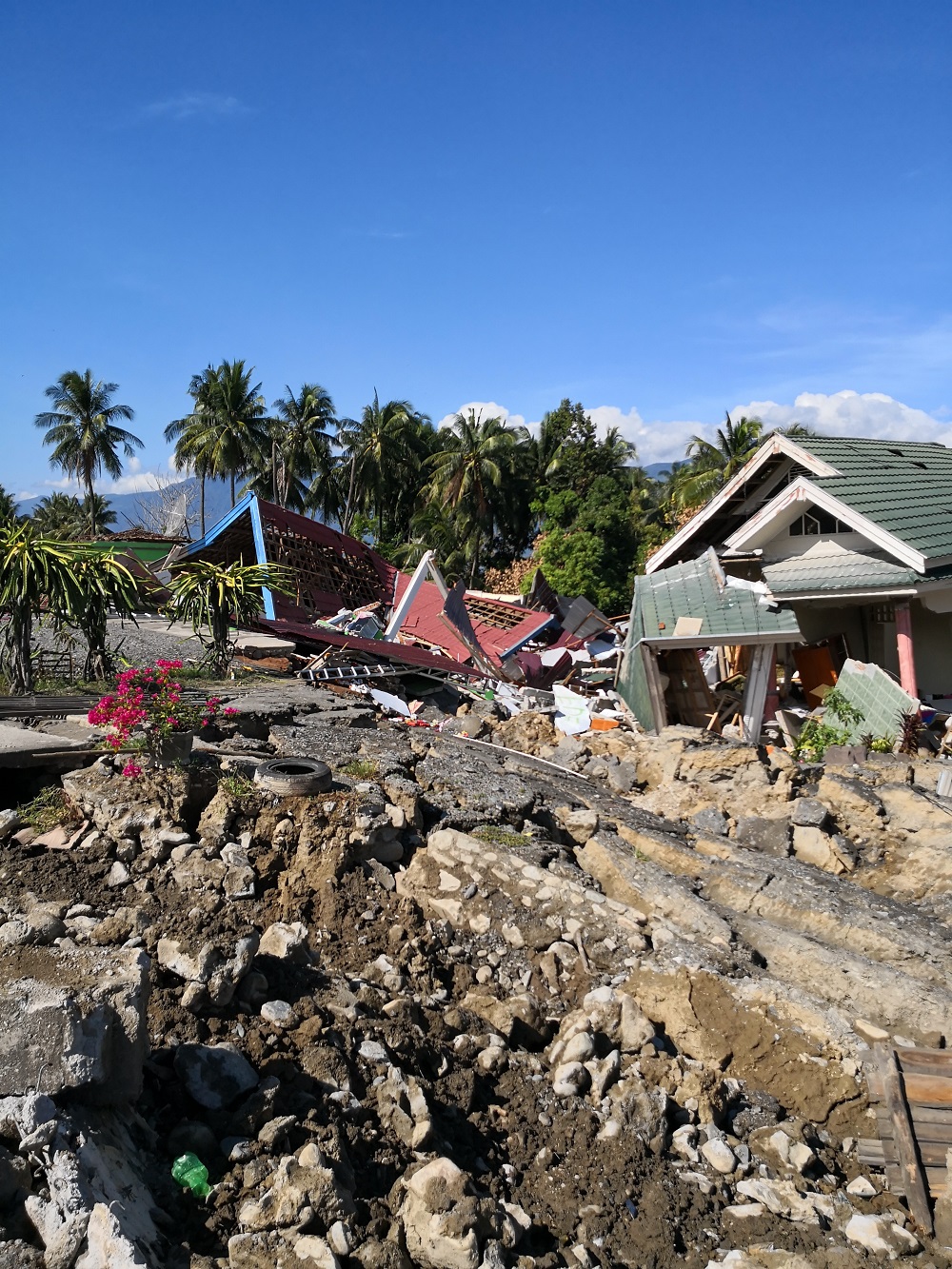One month ago today, a massive 7.5-magnitude earthquake struck Central Sulawesi, Indonesia right in the neck of the Minahasa Peninsula.
The devastating tragedy affected the provincial capital of Palu located about 77km away and the surrounding areas of the northwestern part of Sulawesi. In fact, the aftermath was felt as far as Samarinda on East Kalimantan and even in Tawau, Sabah.
After the earthquake, a tsunami hit Palu, Donggala and Mamuju and swept up houses by the shore and buildings along the way.

To date, more than 2,000 people have been killed by the combined effects of the earthquake and tsunami, over 4,600 injured and more than 220,000 locals were displaced from their homes.
This marked the deadliest earthquake in Indonesia since the 2006 earthquake in Yogyakarta as well as the deadliest one worldwide so far in 2018.
It also surprised the previous earthquake that struck Lombok just a couple of months ago in August, which killed over 600 people.
According to The Jakarta Post, around 68,451 houses, 327 places of worship, 265 schools, 362 shops and 78 offices were reportedly damaged by the Sulawesi earthquake and tsunami, and the subsequent landslides and soil liquefaction that followed.

One month after the disaster and the lives of hundreds of thousands of locals are still far from being back to normal.
We reached out to Dr Naveenkumar Thanggaya, a medical officer at one of the rural government clinics in Sabah, who had volunteered himself in one of the disaster relief missions in Palu earlier this month.

He was involved in providing medical aid, helping out with the logistics, as well as distributing food and clothes. Based on his profession, he was mostly focused on treating those who needed medical attention.

Dr Naveenkumar wrote on his Facebook post that he saw many people starving and begging for food along the streets. Some who were hungry that they became aggressive out of desperation and even started stealing from one another.
It was a devastating sight to behold and he couldn’t help himself but call out to the members of the public to send aid in whatever way they can.

As an alumnus of Universitas Sriwijaya in Palembang, the medical practitioner considers Indonesia his second home.
“Upon hearing the tragedy that occurred, I knew I had to help those who had previously assisted me in my journey to become a doctor,” Dr Naveenkumar shared.
“I feel it is the most appropriate time for me to give back, I owed Indonesia this much.”

On his Facebook post dated 11 October, he mentioned that foreign aids were blocked by the Indonesian government at the time due to unknown reasons.
However, this matter has since cleared up and the government has been receiving help internationally with open arms.
“From the last I heard and discussed with several non-governmental organisations (NGOs) they are now gathering more resources to send aids to North Palu,” he added.
According to Dr Naveenkumar, North Palu is currently the most critical area that requires the most aid. He noticed that NGOs were mainly concentrating on relief efforts in Central and Southern Palu.
During his relief work there, medical supplies, medicine and equipment were very limited. The team had to resort to using their own medicine, which were not enough to treat the affected villagers.
Some of them who were severely injured had to be transported to Central Palu for further treatment. This journey alone takes at least an hour, so one can only imagine how much the villagers had to struggle.
We asked Dr Naveenkumar what was the most heartbreaking sight he had experienced there and he told the story of a family his team had stumbled upon.
They spotted tents with families, children and pregnant women begging for food by the roadside when they were on their way to Palu.

“As we were winding down the car window about to distribute a packet of meal to each kid, they stole the entire box and ran away with it,” Dr Naveenkumar said.
“The next thing that happened broke my heart because everybody clustered around the box fighting for food. It was like a flock of pigeons fighting over bread.”
“They kept on chanting “lapar” (hungry) with signboards that wrote, “Kami tidak butu di foto, kami butu bantuan” (We don’t need people to take photos, we need help).”

On another occasion, Dr Naveenkumar visited a village named Kampung Langaleso in Kecamatan Dolo. There, he saw injured locals with wounds that were severely infected because they had no clean water supply.
The situation got worse as skin diseases started to spread because of that.
“To my surprise, the two other doctors and I were the first doctors to enter the first two villages at Northern Palu. This was almost two weeks after Palu was hit,” he shared.

Now, Indonesia is known to be one of the most disaster-prone countries in the world because it lies on the Pacific ‘Ring of Fire’, where tectonic plates collide, which means many of the world's volcanic eruptions and earthquakes would happen here.
You would recall another catastrophic 9.1-magnitude tremor that struck the coast of Aceh back in 2004, which triggered a tsunami that killed nearly 220,000 throughout the region, including Malaysia.
Hence, in times like this, Dr Naveenkumar urges all Malaysians to help the victims of the Sulawesi earthquake and tsunami because there are thousands upon thousands of people who are still in need of lifesaving supplies and services.

“From this experience, I know that it is possible to put aside all the differences, like religion, race and gender, and come together as one,” he expressed.
In this respect, Astro and Maxis have joint efforts and kickstarted a campaign to help raise funds to ‘Tabung Bencana Gempa Bumi & Tsunami Sulawesi’.
This joint contribution is intended to aid in the restoration of Sulawesi, particularly in rebuilding schools and communities because both companies have always upheld the belief that education plays a vital role in the sustainable economic growth and development of communities.
Members of the public are all encouraged to donate to the fund and lend a helping hand. So, for those who are interested to contribute, visit this link.
The devastating tragedy affected the provincial capital of Palu located about 77km away and the surrounding areas of the northwestern part of Sulawesi. In fact, the aftermath was felt as far as Samarinda on East Kalimantan and even in Tawau, Sabah.
After the earthquake, a tsunami hit Palu, Donggala and Mamuju and swept up houses by the shore and buildings along the way.

To date, more than 2,000 people have been killed by the combined effects of the earthquake and tsunami, over 4,600 injured and more than 220,000 locals were displaced from their homes.
This marked the deadliest earthquake in Indonesia since the 2006 earthquake in Yogyakarta as well as the deadliest one worldwide so far in 2018.
It also surprised the previous earthquake that struck Lombok just a couple of months ago in August, which killed over 600 people.
According to The Jakarta Post, around 68,451 houses, 327 places of worship, 265 schools, 362 shops and 78 offices were reportedly damaged by the Sulawesi earthquake and tsunami, and the subsequent landslides and soil liquefaction that followed.

One month after the disaster and the lives of hundreds of thousands of locals are still far from being back to normal.
We reached out to Dr Naveenkumar Thanggaya, a medical officer at one of the rural government clinics in Sabah, who had volunteered himself in one of the disaster relief missions in Palu earlier this month.

He was involved in providing medical aid, helping out with the logistics, as well as distributing food and clothes. Based on his profession, he was mostly focused on treating those who needed medical attention.

Dr Naveenkumar wrote on his Facebook post that he saw many people starving and begging for food along the streets. Some who were hungry that they became aggressive out of desperation and even started stealing from one another.
It was a devastating sight to behold and he couldn’t help himself but call out to the members of the public to send aid in whatever way they can.

As an alumnus of Universitas Sriwijaya in Palembang, the medical practitioner considers Indonesia his second home.
“Upon hearing the tragedy that occurred, I knew I had to help those who had previously assisted me in my journey to become a doctor,” Dr Naveenkumar shared.
“I feel it is the most appropriate time for me to give back, I owed Indonesia this much.”

On his Facebook post dated 11 October, he mentioned that foreign aids were blocked by the Indonesian government at the time due to unknown reasons.
However, this matter has since cleared up and the government has been receiving help internationally with open arms.
“From the last I heard and discussed with several non-governmental organisations (NGOs) they are now gathering more resources to send aids to North Palu,” he added.
According to Dr Naveenkumar, North Palu is currently the most critical area that requires the most aid. He noticed that NGOs were mainly concentrating on relief efforts in Central and Southern Palu.
During his relief work there, medical supplies, medicine and equipment were very limited. The team had to resort to using their own medicine, which were not enough to treat the affected villagers.
Some of them who were severely injured had to be transported to Central Palu for further treatment. This journey alone takes at least an hour, so one can only imagine how much the villagers had to struggle.
We asked Dr Naveenkumar what was the most heartbreaking sight he had experienced there and he told the story of a family his team had stumbled upon.
They spotted tents with families, children and pregnant women begging for food by the roadside when they were on their way to Palu.

“As we were winding down the car window about to distribute a packet of meal to each kid, they stole the entire box and ran away with it,” Dr Naveenkumar said.
“The next thing that happened broke my heart because everybody clustered around the box fighting for food. It was like a flock of pigeons fighting over bread.”
“They kept on chanting “lapar” (hungry) with signboards that wrote, “Kami tidak butu di foto, kami butu bantuan” (We don’t need people to take photos, we need help).”

On another occasion, Dr Naveenkumar visited a village named Kampung Langaleso in Kecamatan Dolo. There, he saw injured locals with wounds that were severely infected because they had no clean water supply.
The situation got worse as skin diseases started to spread because of that.
“To my surprise, the two other doctors and I were the first doctors to enter the first two villages at Northern Palu. This was almost two weeks after Palu was hit,” he shared.

Now, Indonesia is known to be one of the most disaster-prone countries in the world because it lies on the Pacific ‘Ring of Fire’, where tectonic plates collide, which means many of the world's volcanic eruptions and earthquakes would happen here.
You would recall another catastrophic 9.1-magnitude tremor that struck the coast of Aceh back in 2004, which triggered a tsunami that killed nearly 220,000 throughout the region, including Malaysia.
Hence, in times like this, Dr Naveenkumar urges all Malaysians to help the victims of the Sulawesi earthquake and tsunami because there are thousands upon thousands of people who are still in need of lifesaving supplies and services.

“From this experience, I know that it is possible to put aside all the differences, like religion, race and gender, and come together as one,” he expressed.
In this respect, Astro and Maxis have joint efforts and kickstarted a campaign to help raise funds to ‘Tabung Bencana Gempa Bumi & Tsunami Sulawesi’.
This joint contribution is intended to aid in the restoration of Sulawesi, particularly in rebuilding schools and communities because both companies have always upheld the belief that education plays a vital role in the sustainable economic growth and development of communities.
Members of the public are all encouraged to donate to the fund and lend a helping hand. So, for those who are interested to contribute, visit this link.






